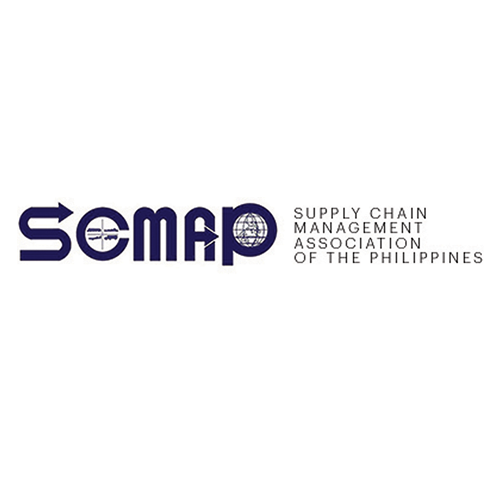The Department of Energy’s latest figures, released last year, state that we do not import crude oil from Russia. 92% of our crude oil imports, in fact, come from the Middle East – Saudi Arabia, the UAE and Oman, specifically. The rest comes from Brunei, our neighbors to the south.
However, we only imported roughly 1.2 billion liters of crude oil for the twelve months ending in June 2021. In comparison, we imported roughly 10 billion liters of processed petroleum products in the same period of time. Inevitable, given that we only have one oil refinery in the country, Petron’s facilities in Bataan. (Shell had a refinery, but is in the process of converting it to an import terminal in light of COVID-19 disruptions.)
Most of the petroleum products we import consist of the energy sources our supply chains heavily rely on: diesel (41.5%), gasoline (25.8%) and LPG (13.5%). We mostly source them from China and our ASEAN neighbors. That said, our suppliers are likely sourcing their products from countries outside our traditional sources of crude oil, including Russia and Ukraine.
In any case, this makes the Philippines extremely susceptible to shocks in the oil market. We may not have direct exposure to Russia, the world’s second largest producer of oil, but economic sanctions imposed in response to its invasion of Ukraine have jacked up prices in every oil market. Long-term supply continues to be a concern as the conflict rages on, and will continue to do so once it ends; sanctions will likely remain in place in the aftermath, when the conversation shifts towards war crimes committed by Russian forces. It’s no surprise that prices at our pumps jumped to such levels in the opening weeks of the war – and while they have stabilized as of this writing, there’s really little indication that these prices will go back to a more affordable level.
Our supply chains rely heavily on fuel for transporting goods, which means we are also heavily susceptible to these spikes. As we have seen in recent years, there’s only so much we can do to minimize costs before passing them on to the consumer. Transport rates will definitely go up in the coming months, particularly as contracts are renegotiated – and that will translate to higher prices in your shelves, physical or virtual.
There’s one more thing to ponder upon as we consider our increasing transport costs. Last week the Intergovernmental Panel on Climate Change released the final part of its latest report. It says it is “almost inevitable” we will breach our commitments set by the Kyoto protocol, of limiting global heating to 1.5C above pre-industrial levels. It also says efforts to reduce the global economy’s carbon footprint are lagging behind, and that countries must significantly step up efforts in this decade if the overshoot is to be reversible. These include advanced technologies like carbon capture and storage, as well as lifestyle changes across the board, but a significant move would be to drastically reduce reliance on fossil fuels including coal and, more appropriately for our supply chains, petroleum. It’s especially important for the Philippines, a country that is highly susceptible to the catastrophic effects of climate change.
One obvious path is to accelerate the adoption of electric vehicles across our land transport networks. It’s already happening here: Mober, for one, is expanding its EV fleet, aiming to have a hundred such vans and trucks by the end of this decade. But they’re just one player in a diverse transport landscape that includes traditional truckers and emerging last mile providers. If we are to truly accomplish what the IPCC report challenges us to do, everyone has to do their part, and fast.
But it is going to be a monumental undertaking. The Electric Vehicle Industry Development Act recently passed Congress and is just awaiting the president’s signature – but while it encourages investment in the infrastructure supporting EVs (like charging stations), it doesn’t exactly encourage individuals and companies from purchasing the vehicles themselves. AutoIndustriya.com reports that the law does not exempt EVs from import duties and other taxes, supposedly due to opposition from the Department of Finance.
This means buying EVs will be prohibitively expensive. Such passenger vehicles already begin at the PHP 2 million mark. What more cargo EVs? It’s already difficult for truckers to adapt to evolving requirements for their vehicles, particularly on fuel efficiency, as the cost of acquiring these vehicles remains high. They risk being left behind if we do start the shift to EVs – not without subsidies and other forms of financial support to help them along the way.
Of course, it isn’t only down to what vehicles we use. For one, we also need further investment in renewable energies, such as solar and wind power, to make them more affordable. This way we can both minimize our carbon footprint and keep our supply chains competitive. This way we can withstand the shocks we are currently seeing in the oil market. This way we can pass on long-term cost savings to our end customers.
SCMAP Live: The second edition of our Innovation Spotlight events, presented in partnership with UPPAF-RESPOND, will be held on 19 April from 2pm. We will celebrate the role of women in supply chain with Lalamove Philippines head Dannah Majarocon, JG Superstore co-founder Jill Tan and SCMAP executive director Cora Curay. Register for free at scmap.org.
Henrik Batallones is the marketing and communications director of SCMAP, and editor-in-chief of its official publication, Supply Chain Philippines. More information about SCMAP is available at scmap.org.





